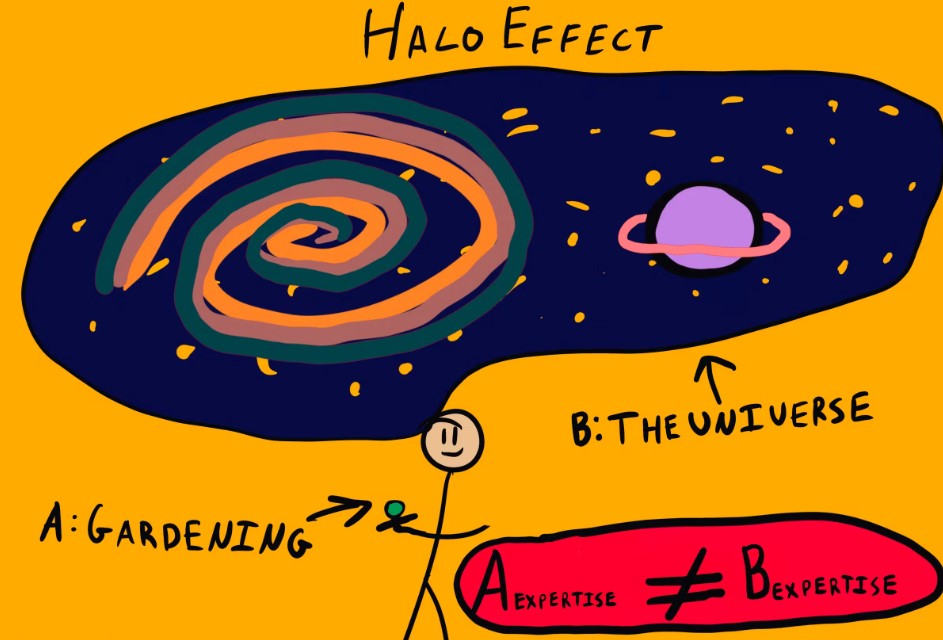The Halo Effect: When First Impressions Color Our Judgment
The Halo Effect is a cognitive bias in which a person’s overall impression of a particular individual, product, or entity is influenced by a single positive trait or initial impression. This cognitive bias can lead to a skewed, overly positive perception and judgment.
Examples of the Halo Effect:
Job Interviews: In a job interview, the interviewer is impressed by the candidate’s appearance and confident demeanor. As a result, they tend to rate the candidate’s qualifications and skills more favorably, even without substantial evidence.
Product Branding: A company with an established reputation for producing high-quality products releases a new item. Customers assume that because they had a positive experience with the brand’s previous products, this new product must also be excellent.
Physical Attractiveness: People who are physically attractive are often perceived as more intelligent, capable, and trustworthy, even if these attributes are unrelated to their appearance.
The Halo Effect in Action:
Imagine a scenario where a new colleague, Sarah, joins the office. During her first week, she brings freshly baked cookies for the team, showcasing her friendly and considerate nature. As a result, her coworkers develop an overwhelmingly positive impression of her. This initial positive trait of being thoughtful influences their perception of her professional capabilities and personality.
Solutions to Mitigate the Halo Effect:
Separate Traits: Encourage individuals to separate and evaluate different traits and qualities independently. Don’t let a single positive characteristic overshadow a person’s overall assessment.
Critical Analysis: Teach individuals to critically analyze their judgments and perceptions. Encourage them to question the basis of their conclusions and consider additional evidence.
Seek Multiple Perspectives: Gather input from multiple sources or viewpoints when making important judgments, whether in hiring decisions, product purchases, or personal relationships. This can help balance the impact of the Halo Effect.
Mindful Evaluation: Promote mindful and deliberate evaluation of individuals or products. Encourage people to assess each aspect independently and avoid making snap judgments based on first impressions.
In conclusion, the Halo Effect is a cognitive bias that influences our overall perception of someone or something based on a single positive trait or initial impression. To mitigate the impact of this bias, it is important to separate traits, engage in critical analysis, seek multiple perspectives, and practice mindful evaluation. By doing so, we can make more accurate and balanced judgments.
